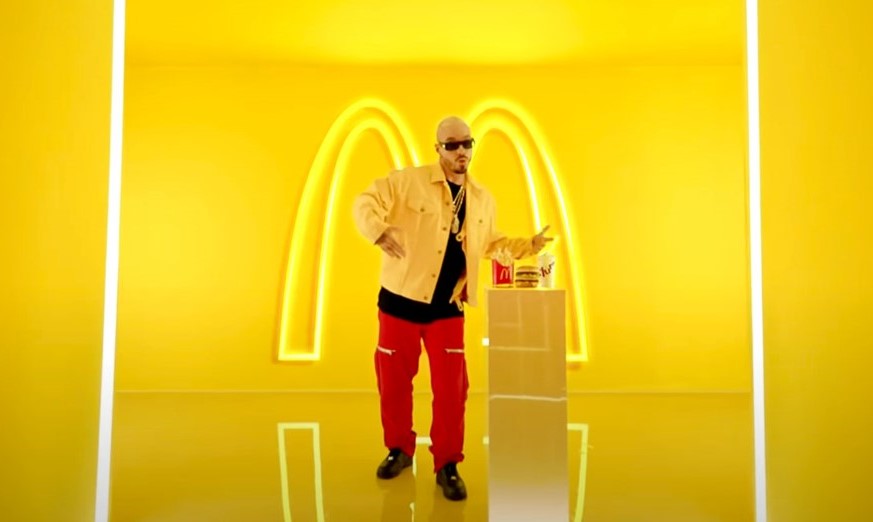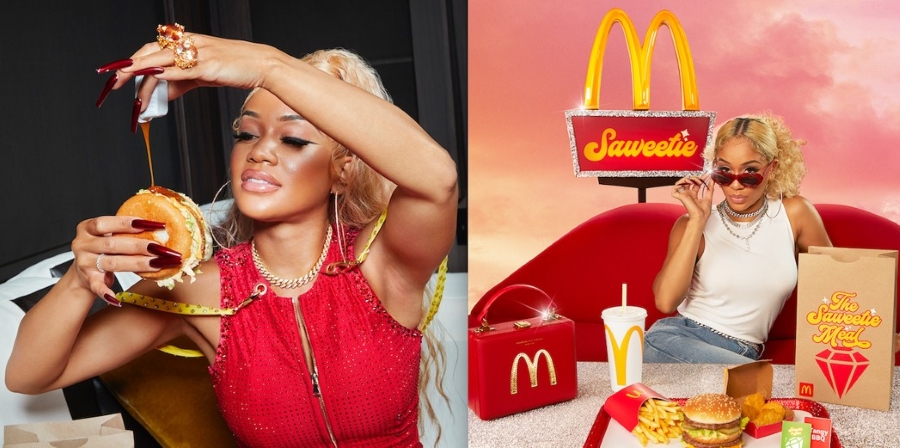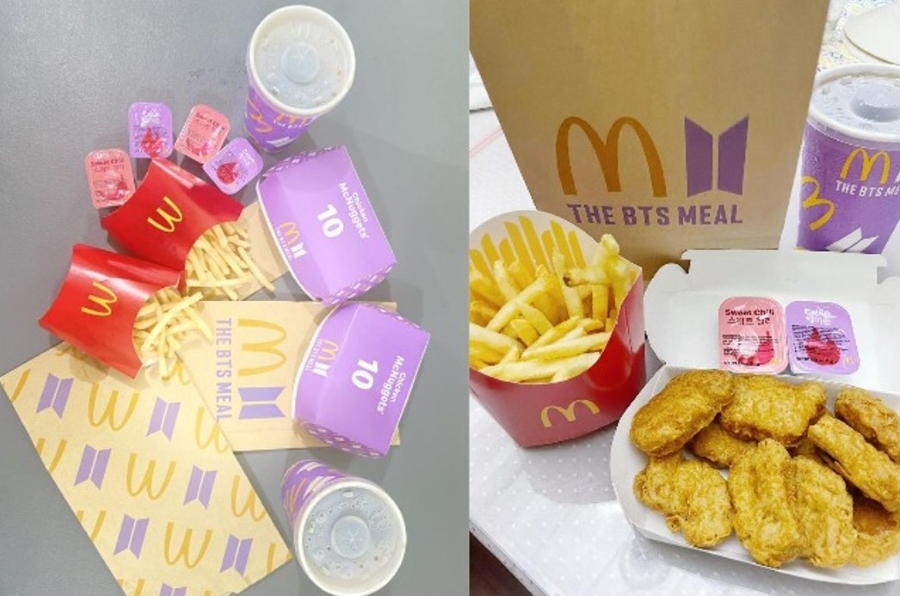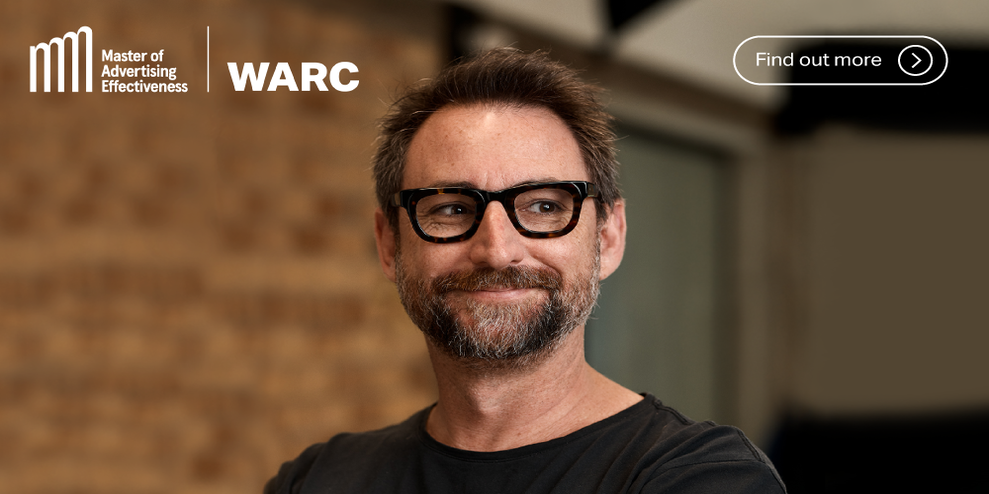James Hurman examines the 2022 WARC Awards for Effectiveness North America Grand Prix for McDonald’s, ‘Famous Orders’ by Wieden+Kennedy New York, in the second instalment of his EFF BOMB series.
If there’s a pitfall anywhere in the advances of marketing science, it’s that we risk forgetting that advertising, at its very best, lives at the intersection of logic and magic.
Sure, it’s a relief to finally have an abundance of evidence-based logic on getting our budgeting and targeting right, balancing our short- and long-term efforts and building mental availability and distinctive assets.
But no, the take-out shouldn’t be that advertising effectiveness is simply building penetration by targeting all category buyers with ads full of distinctive assets.
About halfway through the Master of Advertising Effectiveness programme, we stop learning about the logic and shift focus to the magic. To ideas, emotion, creativity.
Things that are trickier to quantify or bottle or playbook. But which the data proves are critical to achieving top-tier effectiveness.
The kind of results that McDonald’s have seen with their incredible ‘Famous Orders’ campaign.
This case is a lesson in logic and magic in lockstep. Incisive strategic diagnosis leading to an extremely simple and clever creative idea, executed in a way that solved a critical business challenge the brand was facing.
That challenge was that QSR category growth in the US was being driven by multicultural youth – young African-American, Hispanic and Asian consumers.
But that McDonalds was losing share of that demographic.
Which is a major problem when multicultural youth are the growth engine of McDonald’s future. Today, 50% of the US population 18 and under is multicultural. And by 2045, 50% of the entire US population will be multicultural.
So the logic was pretty self-evident. McDs’ most important penetration weakness was in multicultural youth. This group were both the light and lapsed buyers of the brand today, and where a lot of the profit would be tomorrow. Ergo, marketing’s objective was to build the brand and drive traffic with multicultural youth.
Alas, no amount of ESOV or distinctive asset logic would be adequate to change young multicultural Americans’ minds about one of the world’s oldest and most middle-American brands.
Cue magic.
It started with a truth that was originally explored in McDonalds’ 2020 Super Bowl spot – that no matter who we are, we all have a go-to McDonald’s order. The discovery that Kim Kardashian dipped her McNuggets in honey had captured the internet’s imagination, making that ad a hit.
It’s an epic truth. It’s universally relatable, and even better, it’s actionable.
McDonald’s and Wieden+Kennedy were able to spin that truth into a series of custom products that allowed people to consume McDonald’s just like their heroes.
It began with a collab with rapper Travis Scott. His go-to order? A Quarter Pounder mod that involves adding bacon, lettuce and mustard and an extra slice of cheese. Paired with medium fries with BBQ sauce, and a medium Sprite.
Want to eat McDonald’s like Travis? Easy – just come in, order the Travis Scott Meal, and we’ll make it for you just like we’d make it for him.

And yes, Travis really does eat that meal. One of the criteria for Famous Orders partnerships is that they’re legit. Not celebs who’d never eat McD’s. Celebs who really do.
When it launched, the Travis Scott meal was so popular that it led to shortages of beef, onions, lettuce and Sprite at McD’s restaurants all over the US.
It drove an 11% sales increase among 18–24s and a 16% increase among young African-Americans.
They created Travis Scott Meal merch that resold on eBay for ridiculous amounts. People framed their Travis Scott Meal receipts, and stole the posters advertising the meal out of McD’s restaurants.
It was a commercial success and a cultural juggernaut.
And it gave way to a series of Famous Orders meals created with heroes of America’s young multicultural consumers.
Colombian singer and Latin star J Balvin’s meal (A Big Mac sans pickles, fries with ketchup and an Oreo McFlurry) drove a 70% sales increase among young Hispanic Americans.

K-pop superstars BTS’s meal (10-piece McNuggets, fries, Coke and special Sweet Chili and Cajun dipping sauces) drove a 69% sales increase among young Asian Americans.

Female African-American rapper Saweetie’s meal (Big Mac, four-piece McNuggets, fries, Sprite, Tangy BBQ Sauce and “Saweetie’ N Sour” sauce) drove a 49% sales increase among young African-Americans.

Collectively, the meals drove $280m in incremental sales. For every dollar spent on marketing, ROMI ranged from $3.09 to $8.60.
What I personally love most about Famous Orders is the ingenious operational efficiency of the idea. Without needing to change much at all in their supply chain or kitchen ops, McDonald’s were able to create whole new products that attracted consumers in droves.
It’s a masterclass on the power of creativity to create something extraordinary out of the stuff that’s just sitting around us.
In the paper, the authors humbly say that “it’s not a huge leap to go from celebrating celebrity orders in a commercial to making those orders available at restaurants for people to participate in.”
But the most genius thing to do in this case wasn’t to make a huge leap. It was to make that small, simple leap and to know it’d be devastating. That’s proper, responsive, impressive planning.
Famous Orders adheres to many of the core principles of advertising effectiveness. They didn’t just blandly apply McDonalds’ distinctive assets – but they did incorporate them, in relevant ways, to the packaging and marketing of each meal.

They used emotion deftly – by leveraging the emotional connection young multicultural Americans have with their heroes.
They did something truly creative – an original and extremely engaging idea that was executed with flair.
And they committed to the idea – the Creative Commitment of this campaign is very high, at 10. They spent a decent amount on the media, they ran it long over successive executions, and they spread it out across many channels from TV to radio to mobile to social to in-store to packaging to merch to PR.
One of the ways this campaign goes against the marketing science is in how it specifically targeted a particular consumer segment as opposed to all category buyers.
Some of the most illuminating tables in How Brands Grow are those that compare beer brands and credit card brands and show that, despite marketers spending all kinds of effort on ‘positioning’ those brands to appeal to particular segments of people, their customer bases turned out to all be pretty much identical – and to match the general demographics and psychographics of the category. They showed that even diet soft drinks – positioned for so long as a female option – were consumed almost identically by men.
The implication is that ‘positioning’ a brand for a certain kind of consumer is all a bit futile. That people make choices on products based on the relevance of the product itself, not on its advertising.
And this is why the Famous Orders work was so effective at connecting McD’s with multicultural youth. They didn’t try to say they were relevant to that audience. They made a product that really was relevant to that audience.
And they did it authentically with celebs who dug McD’s. One of my favourite parts of the paper reveals that “Travis regularly wears the partnership merch he created, months after we last paid him any money. BTS member J-Hope bought Travis’ Chicken McNugget pillow. And Saweetie is still calling herself ‘Big Mac Mama’ – they’re all proud of the cultural moments we created together.”
They did all of this by building on the truth that no matter who we are, we all have a go-to McDonald’s order. That truth had already been mined in the prior Super Bowl spot. But the agency and client were smart enough to spot that it had much more life in it.
Way before it was obvious, my friend the great planner Gareth Kay questioned the value of ‘big ideas’ – instead advocating for the greater value of ‘long ideas’. Ideas that could be re-executed in all kinds of different ways, over a long period of time.
You’re Not You When You’re Hungry is a long idea. Campaign for Real Beauty is a long idea.
Those were the days before Field & Binet had shown the compounding commercial value of long-term campaigns. But Gareth had intuited it. He’d been Goodby Silverstein’s CSO, and had carried the torch on one of America’s greatest long ideas – Got Milk?
Since this Grand Prix-winning effectiveness paper was written, McDonald’s have gone on to release more Famous Orders with the likes of Mariah Carey and Cardi B, and are exporting the campaign to markets across the world.
Which makes me think we’re witnessing the beginning of another all-time-great long idea.
Read the full effectiveness paper on WARC here.
Learn about the Master of Advertising Effectiveness here.
About James Hurman
James is an advertising effectiveness expert from New Zealand. He’s the programme director of the Master of Advertising Effectiveness, in partnership with WARC. He’s also the author of effectiveness books The Case for Creativity and Future Demand, and the author of major effectiveness studies The Effectiveness Code and The B2B Effectiveness Code. He’s a co-founder of brand tracking SAAS martech start-up Tracksuit, and the founding partner at New Zealand innovation studio Previously Unavailable. James spent his advertising career as a strategic planner, and was named the world’s #1 planning director in 2013.
—
This article first appeared in https://www.warc.com
Seeking to build and grow your brand using the force of consumer insight, strategic foresight, creative disruption and technology prowess? Talk to us at +971 50 6254340 or engage@groupisd.com or visit www.groupisd.com/story

